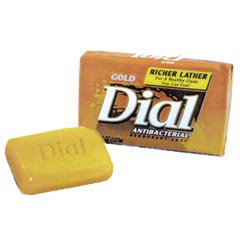Interview with Annick Menardo in the New Straits Times {The 5th Sense in the News} - The Vague Toiletry Scent Trend? {Scented Thoughts} {Trend Alert}

There is an interview with perfumer Annick Menardo in the Malaysian newspaper New Straits Times around the Diesel duo of fragrances.
We thought in particular that it was interesting to learn that Diesel for Men was inspired by an anise and lavender balm that brand owner Renzo Rosso had Menardo smell. Interesting because it explicitly states that fine fragrances can derive inspiration from toiletry products and their scents.....

The tendency is to think that the reverse is true, that for example, Chypre by Coty was so popular that it went afterwards into a number of toiletries, rendering it sort of more generic-smelling after a while. But as we already pointed out, Chanel No. 5 was inspired by the smells of soap and body cleanliness and it worked very well commercially as we all know!
In fact, this type of transfer might help define what "generic" concretely means when used in a perfume review. To us, it means both that it is an accord found in a number of commercialized perfumes like a standardized, and let's face it, lazy ready-made and overused accord, and that, in some cases, it is also smelled in soaps, shower gels, shampoos, Kleenexes etc.
Menardo's remark also helps us better understand certain recent perfumes such as Laurier-Réglisse by Marie Salamagne for Guerlain which, we think, has a certain green herbal shampoo accord going on not unlike Private Collection by Estee Lauder, but even more done like a shampoo scent in its diffuse, vague structure. It goes beyond the effect of a traditional so-called "soapy accord" usually found in the longer drydown. Here it seems to permeate the perfume. Even closer to home, the latest Lolita Lempicka Fleur Défendue created also by Annick Menardo seems to borrow for part of its aesthetics from the more diffuse, indistinct, and generic smells found in toiletry products. One thing is reassuring about these smells: they are not challenging at all and have been tested and tried on a daily basis by consumers who have often endowed them with an affective connotation.
If marketers and perfumers are doing it, it is because they know there is a consumer base for it. So, after the consensual gourmand notes, are we going towards consensual toiletry notes to play further on the comfort-perfume register? We invite you to watch this trend in prestige fragrances and perhaps even niche ones.
Gustatory and Toiletry-like perfumes, the two sure-recipes-for-success of modern perfumery (cf. Angel and Chanel No. 5)? Diesel Fuel for Life for Women used an accord inspired by a blackcurrant facet of red wine from Diesel owner's Rosso di Rosso Merlot and Cabernet.
Now the question we want to ask is, what balm was that and who is the obscure creator of this anise and lavender accord? It is also revelatory of perfumers' habits of looking, not necessarily at an original impression, but at pre-existing successful accords to guide their inspiration.
Do you have personal toiletry scents you would love to see captured in a fine fragrance? Or do you wear any basic toiletry scent in the same way as an elegant perfume?










I think you're right. A great part of the public seems to crave a "just out of the shower" feeling that could push fine perfumery towards toiletry fragrances. The taste for clean musks, with the same compounds as the ones used in detergents, is quite typical of this trend. Of course, leave it to the brilliant Annick Menardo to give it yet another creative twist.
What is striking to me is that this goes beyond the clean white musk drydown and seems to have infiltrated the structure of the scent, its very aesthetics.
Annick Menardo is no doubt brilliant but perfumers work under certain constraints. The move to put focus on them is good, but at the same time, one should not forget that their authorship is sometimes relative. In this case she worked with two other perfumers too: Jacques Cavallier and Thierry Wasser. It's a team work and I early on used the analogy with a film crew to point to the multiplicity of actors in the process of creation of a perfume when everybody else were talking about "the" perfumer, completely discarding artistic directors for example. To me perfumers are like screenplay writers in the equation -- I'd have to think about that a bit more. At any rate, they are not the directors.
The romantic notion of a single author seems not to work in many cases.
Again, agreed. I was asked recently who was my favourite contemporary perfumer. Whereas I could rattle off several names of dead (or aged) ones without skipping a beat, it was much harder to come up with younger ones. They have to work under such constraints that their specific style doesn't shine through as it does in the work of Ernest Beaux, Germaine Cellier or Edmond Roudnitska. But then again, they may have all done scents in their time that were less distinctive and haven't survived. Yet from reading and talking to older perfumers I get the feeling that there was more of a possibility to follow their choices, or at least not to have too many people intervening in those choices.
Well for today I think that Lutens/Sheldrake and JC Ellena offer an immediately recognizable style.
There is also the question of the use of signature bases in perfumery, which creates an element of recognition, but is not the most creative part of a composition.
But yes, I think that overall from what I hear, perfumers complain more today than yesterday about lack of independence from marketers.